Have you ever seen a blue poodle and wondered why its fur was not actually blue? Let’s uncover the mystery behind this special shade and what makes these rare pups so special. Poodles dazzle with their ability to memorize language and serve ably as home companions, but the intriguing story behind the not-quite-blue coat deserves closer examination. What subtle hue graces this unique breed, if their fur is not truly blue?
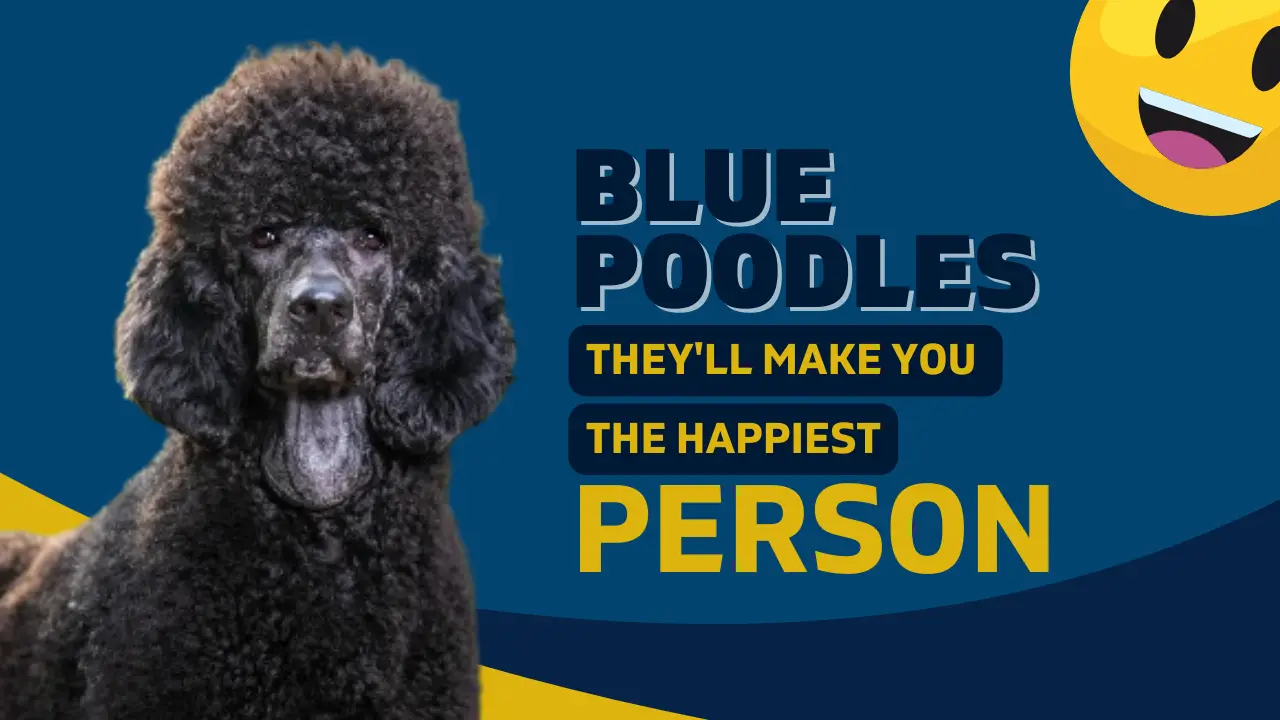
What Will You Learn? 👇
What does a blue poodle look like?
Poodles with blue coats do not actually have a coat of this particular color. Puppies are born black, but with age, usually by the age of two, the coat color fades and takes on a “muted” bluish tint. This shade can be obtained by mixing black paint with dark blue and adding a drop of silver to it. In other words, it is an ash color that is too light to be black and too dark to be silver. The blue poodles’ eyes are dark brown, and the nose, rim, and lips are black.
It can take a breeder over three years to find a stunning blue poodle. This is because it takes all the time and effort to create a beautiful blue poodle, and none of this can even guarantee that you will find a beautiful blue coat. Therefore, sometimes even after a long wait, they may not succeed.

Read our Smart Poodles - Smart Tricks eBook for only $2.99
Dive into a treasure trove of engaging tricks and tips designed specifically for your poodle!
Blue poodles are similar to silvers, as their color is difficult to predict in the first months.
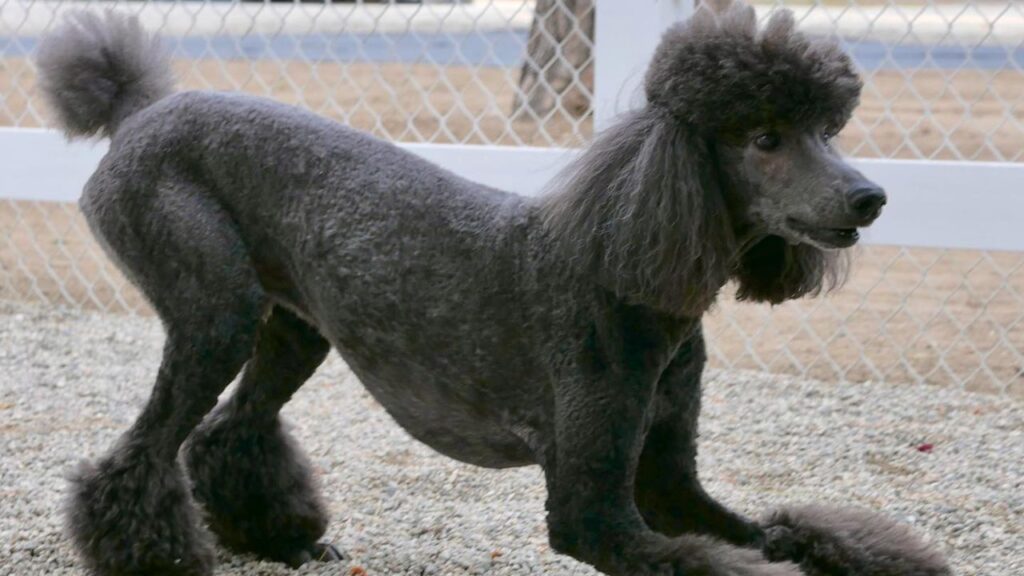
Blue poodles have an incomprehensible color that can sometimes be confused with silver poodles. It is important to note that when a blue poodle is born, it comes in black. However, there are few white hairs on its legs. When the puppy is six weeks old, the hair on the legs becomes shinier. Blue wool is not as dark as black but still has the brightness of its color. Meanwhile, the blue poodle does not have a noticeable color change like the silver one. Blue poodles are commonly referred to as midnight blue or navy blue.
In most cases, people have the wrong first impression of a blue poodle because their coat’s color is very similar to black. However, if you look closely at the coat, you will see the differences. Blue is similar to cyan blue, but not glossy like the Yorkshire breed; blue is darker.
Character traits of the blue poodle
The blue poodle is an active breed, but, despite its mobility, it is mentally balanced and calm. Breeders distinguish the following characteristics of the breed:
- The dog loves children and is attached to the family. He does not distinguish between domestic animals and treats the owner and all other family members well.
- The blue poodle is a very playful dog that enjoys active games such as jumping over obstacles, playing with the ball, or catching cymbals.
- Thanks to the long and thick coat, the blue poodle is not afraid of wind, snow, rain, and drafts. Is suspicious of strangers unless they are children. At first, he growls at an adult, but if he sees that the owner treats the stranger well, he loses interest in the subject.
- The poodle is one of the easiest breeds to train and is suitable for novice dog breeders.
- Miniature and toy poodles are easy to toilet train with disposable diapers or litter boxes. So, you do not need to walk with them in bad weather.
- Standard poodles can be kept outdoors in proper kennels.
- The playfulness of the blue poodle is manifested with other animals. The dog will catch up with an unfamiliar cat or birds, but only out of curiosity about what to play with them. Moreover, poodles treat other pets well.
- Poodles are a non-aggressive breed, and even males are rarely the first to get into fights with other dogs. Thus, miniature and toy poodles should be protected from other large breeds.
- Blue poodles have a keen sense of smell and are sometimes used by customs to search for explosives and drugs.
- A curly-haired dog is an excellent swimmer who will willingly climb into the river for a ball or a stick.
Common Health Issues and Preventive Care for Blue Poodles
Hip dysplasia and eye problems frequently affect blue poodles. Improper hip formation reduces mobility and causes pain. Regular veterinary checkups allow early detection and joint-sparing treatment to improve quality of life. Genetic eye conditions risk blindness if unchecked but annual screening catches issues for intervention or breeding prevention.
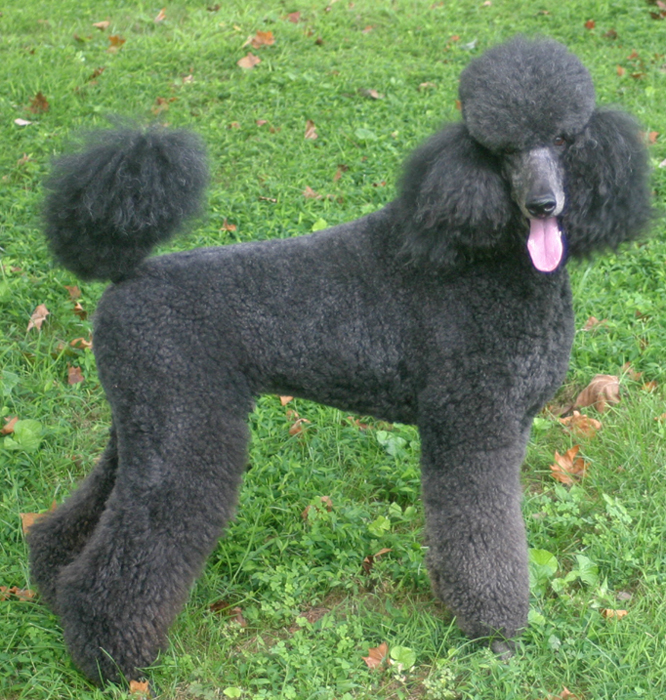
Skin allergies and obesity also commonly impact blue poodles. Identifying triggering allergens in diet and environment aids avoiding irritation and itch. A balanced, appropriate portion diet prevents excessive weight from straining joints and heart.
Bleeding disorders can likewise affect the breed. Von Willebrand’s disease risks improper clotting but routine screening exposes carriers to limit propagation.
Socialization further benefits well-being as any dog stresses with isolation.
The Secret Colors of Blue Poodle Puppies
Puppies are born black, but the color fades with age to a grayish blue tone by age 2.
A poodle’s color comes from genes passed down from its parents. There are different versions of the gene that determines coat color. Black poodles have one version, called the “dominant silver gene.”
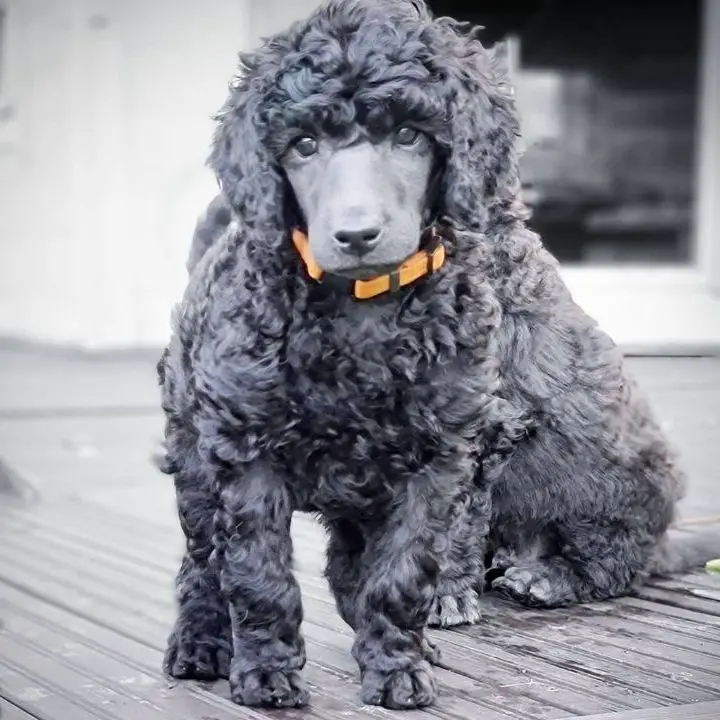
When a black poodle inherits both the dominant gene and a less common version of the gene, called the “recessive silver gene,” it causes their coat to gradually turn grayish-blue. This makes them a “blue” poodle.
Blues inherit one gene that lightens their coat slightly over time. Silvers have two recessive genes that lighten their coat color even more than blues. So silvers appear lighter gray than blues as adults.
The genetics are what gives blue poodle coats their subtle color change from black as a puppy to the darker blue-gray shade as an adult. Understanding these genes helps explain why some litters have black or blue puppies that change color with age.
Is Their High-Maintenance Coat Worth the Effort?
Regular grooming is essential to keep the blue poodle’s thick coat looking healthy. Daily brushing with a poodle comb and slicker brush prevents tangles as the hair grows continuously.
Comb the coat alternately along and against the growth. Start on the body then paws to avoid tangling, which is difficult to remove.
Blue poodles enjoy water, so bathing twice monthly with a long-haired dog shampoo does not stress them. Before bathing, thoroughly comb out any tangles using scissors to carefully cut them if needed. Lather and rinse fully twice to wash the coat completely. Careless washing causes quick shedding.
Grooming also includes periodic haircuts. The coat’s springy texture allows diverse styling, more than any other breed. Standardized cuts like “sport” and “sheep” contour the body simply.
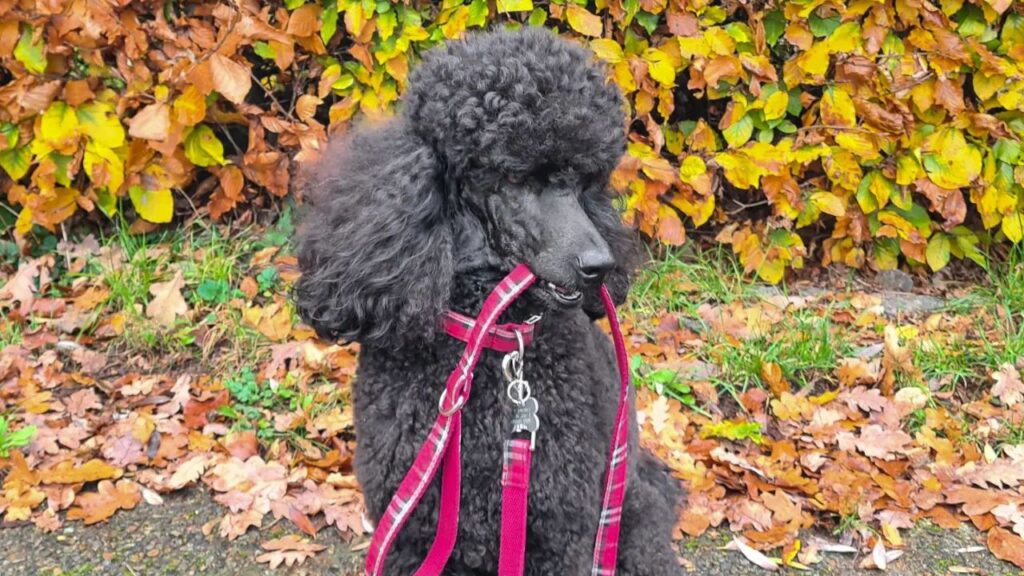
Professional grooming every 3 months shapes the body and limbs properly. Lessons from experienced masters teach owners to cut hygienically themselves by removing monthly regrowth on the face, underside, and genitals using small scissors. Paws need clipping every 2 weeks.
Being energetic, blue poodles require daily walks, preferably 3 including one long run off-leash.
The diet contains meat like beef and chicken as 1/3, plus oatmeal, rice and millet as grain bases cooked in water not broth. Limited pasta and 2 weekly eggs supplement homemade cheesecakes if raw food is refused. Periodic vegetables add nutrition.
Let me know if any part needs adjustment to better follow the guidelines concisely while ensuring understandability.
Share Your Poodle Stories
We hope you’ve enjoyed learning about the unique traits and colors of poodles. To make this discussion even more engaging, please consider sharing your own poodle anecdotes and experiences in the comments below.
Do you have a blue or parti poodle of your own? Let us know about their personality quirks and how their coat color surprised you. What do you love most about your poodle companion?
By contributing your personal poodle stories, you’ll provide enjoyable real-world examples to enrich our understanding. Don’t be shy – we want to hear all about your poodle! Your anecdotes could inspire others seeking the perfect poodle friend to add to their family.
Marko is the founder and author at PoodleHQ, where he blends profound expertise with formal training in Animal Behavior and Canine Genetics. With multiple generations of poodles under his care, he’s a breed connoisseur, honored with the Canine Care Excellence Award and lauded by the International Pet Enthusiasts Association.


HI MARKO…INTERESTING ARTICLE..I AM LOOKING FOR POODLE ABOUT 20 LBS, BUT I WANT ONE WITH BLUE EYES…CAN YOU HELP??
Hi Dee. Thank you for your kind words.
Unfortunately, blue eyes in poodles are not common and they are often a sign of the notorious merle gene. You can read more on this topic in these two articles I covered:
The best way for you to find your new BFF is through our Breeders page, where you can find one close to your area.
All the best & let me know how your search goes 🙂
Marko
I have a blue poodle and I would really like to know the differences between a regular standard poodle and a standard blue poodle? Before this one, I had a brindle coloured poodle and when his hair was growing out, he had some small, organg streaks through his coat. Can you answer my question please?
Hi Lynn.
A blue poodle is a variation of the standard poodle breed, but its coat is not actually blue. The coat of a blue poodle is a shade of ash color that is too light to be black and too dark to be silver. It takes time and effort to find a blue poodle with a stunning coat, and the color can be difficult to predict in the first months.
I adore my toy blue poodle.
We adopted Jazzy from the Florida Poodle Rescue.
Leticia,
CoralGables,Fl
I have a blue poodle
Puppy. He is 6 months and super affectionate and playful.